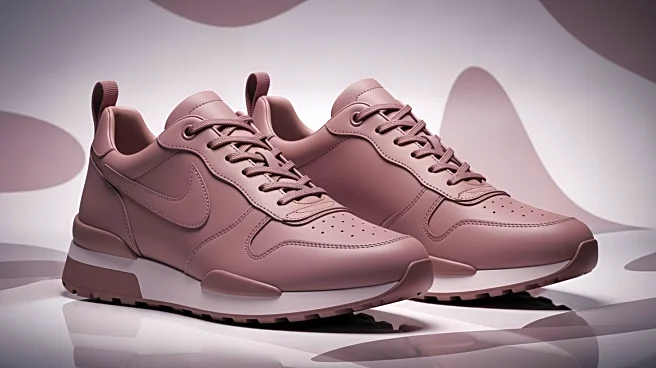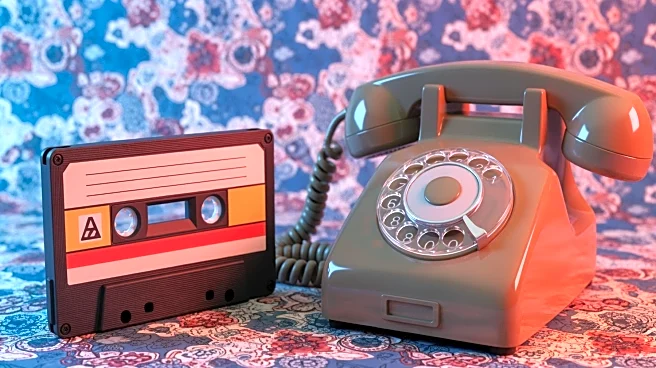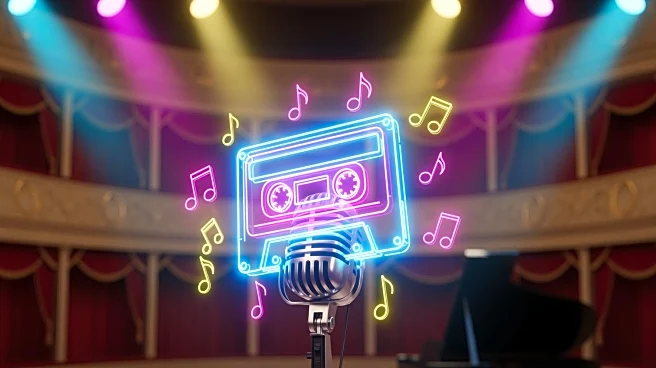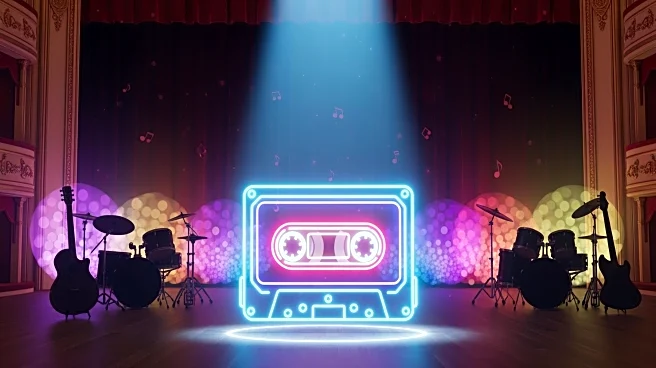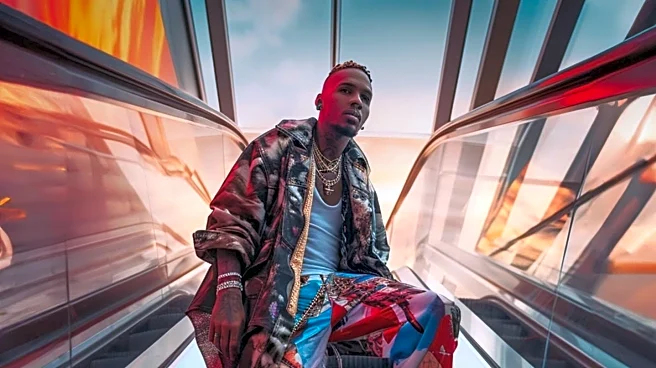What's Happening?
Gap has unveiled a new advertising campaign in collaboration with designer Sandy Liang, characterized by its simplicity and imaginative storytelling. The campaign, brought to life through animation by Annie
Choi, focuses on a narrative that reflects Liang's design language and personal story. The ad features motifs such as stars and bows, symbolizing dreaming and self-expression, respectively. These elements are integrated into the imagery of a classic Gap sweatshirt paired with Liang's bow-back trench, representing a blend of heritage and modern whimsy. The campaign avoids traditional narration, allowing the visuals to convey the story, thereby inviting viewers to interpret the narrative in their own way.
Why It's Important?
This campaign marks a significant shift in advertising strategy, where Gap chooses to 'whisper' rather than 'shout' its message. By relying on visual storytelling without voiceover, Gap aims to connect with a broader audience, allowing individuals to find personal meaning in the narrative. This approach reflects a growing trend in marketing where brands focus on creating emotional connections rather than delivering direct messages. The collaboration with Sandy Liang also highlights Gap's commitment to innovation and inclusivity, as it seeks to bridge generational gaps through shared experiences and universal themes of imagination and nostalgia.
What's Next?
Under the leadership of Chief Marketing Officer Fabiola Torres, Gap is expected to continue exploring creative collaborations and campaigns that emphasize shared experiences and emotional connections. This strategy may lead to further partnerships with designers and artists who can bring unique perspectives to the brand. As Gap continues to evolve its marketing approach, it may influence other brands to adopt similar strategies, focusing on storytelling and emotional engagement rather than traditional advertising methods.
Beyond the Headlines
The campaign's emphasis on simplicity and imagination could have broader implications for the advertising industry, encouraging brands to reconsider how they communicate with consumers. By creating space for personal interpretation, Gap's approach may inspire a shift towards more inclusive and diverse storytelling in advertising, where consumers are invited to engage with the brand on their own terms. This could lead to a more personalized and meaningful consumer experience, fostering brand loyalty and community engagement.



